Niel Black Memorial Presbyterian Church
Noorat
B. 1875 George Fincham for residence of George Peake, Melbourne;
inst present loc 1893 George Fincham;
reb & enl 1902 Geo Fincham & Son. 3m, 20spst, 6c, tr.
Reb 1966 George Fincham & Sons. 2m, 20spst, 7c, elpn.
Gt: 8.8.8.4.2-2/3.2. Sw: 8.8.8.4.4.2.II.8. Ped: 16.16.8.8.5-1/3.4.
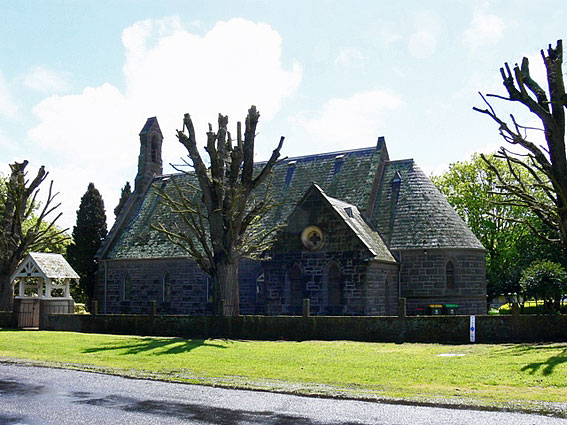
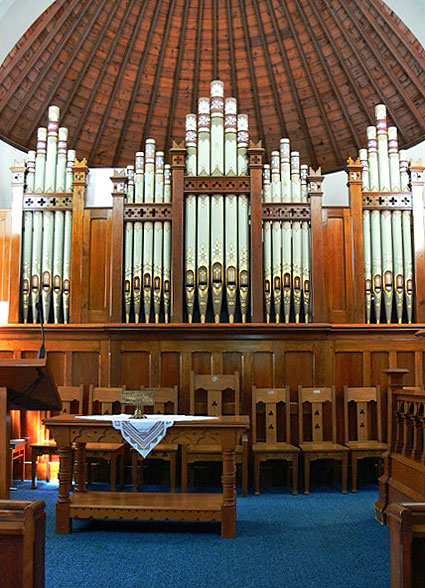
The Presbyterian Church at Noorat was erected in 1883 as a memorial to The Hon Niel Black MLC (1804-1880), of ‘Mount Noorat’, a prominent local landowner. The architect was John Honeyman, of Glasgow and it was built in bluestone under the supervision of Alexander Henderson, of Colac. The design incorporates a semi-circular apse, housing the organ, bellcote and an elaborate timber porch. The interior incorporates outstanding stained glass, in arts and crafts idiom, from James Powell, Whitefriars, UK.
The organ was built in 1875 by George Fincham for George Peake, Collins Street, Melbourne as a two manual organ of eight speaking stops.
GREAT |
8 8 4 8 8 4 2 16 |
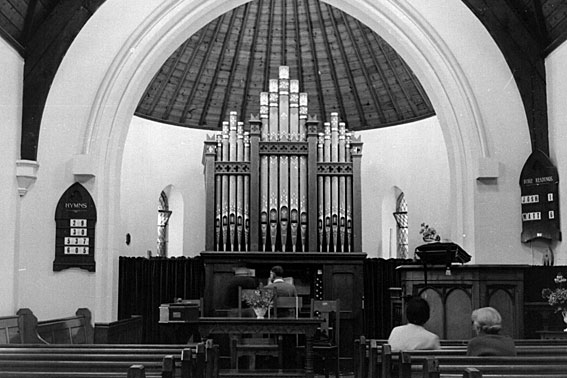
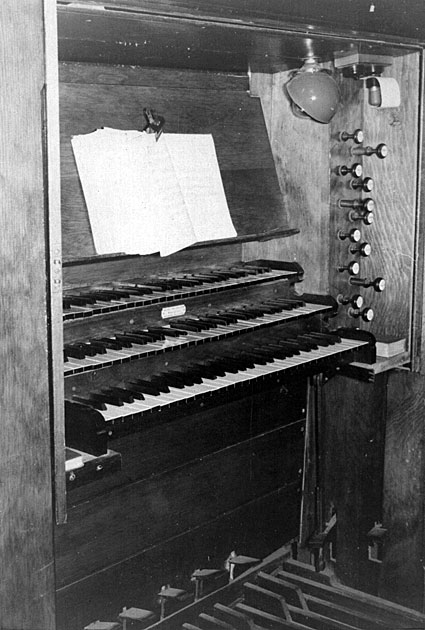
Niel Black Memorial Presbyterian Church, Noorat
[photographs of the organ case and console by Robert Symons before the 1966 rebuild]
In 1893, this organ was installed at Noorat at which time an Oboe was added to the Swell Organ and a Dulciana to the Great Organ. It is likely that new zinc façade pipes were also introduced at this time, with the typical French mouths of the period. In 1902 it was rebuilt by George Fincham & Son and enlarged to three manuals at a cost of £257. A Choir Organ of four stops was added, together with four additional stops to the Swell Organ and several other tonal alterations took place.
GREAT |
16 8 8 8 4 2 16 8 8 8 8 4 2 8 8 8 4 8 16 8 |
prepared for TC A A |
Compass: 56/30
Attached drawstop console
Mechanical action to manuals and stops
Tubular-pneumatic pedal action
In 1966 this organ was rebuilt by George Fincham & Sons Pty Ltd. The number of manuals was reduced to two and electro-pneumatic action and a detached stop key console were installed. A number of tonal alterations took place. The casework was also widened and two new lateral flats of carefully stencilled pipes installed to match the originals.
GREAT |
8 8 8 4 2-2/3 2 8 8 8 4 4 2 II 8 16 16 8 8 5-1/3 4 |
A new new new 19.22 B (old Bourdon) A B B B |
Compass: 61/30
Electro-pneumatic action
Detached stopkey console
In the grand mansion ‘Dalvui’ close by in Noorat, Niel Walter Black installed a three manual organ of 26 stops built in London by Hill & Son in 1909. Sadly he perished in the ship the ‘Waratah’ which vanished off the coast of South Africa without trace in the same year and the organ was donated to the chapel of Geelong Grammar School by his brothers. Remnants of the lower casework survive in the dining room of the house. No photographs of the organ in place in the house are known to survive.
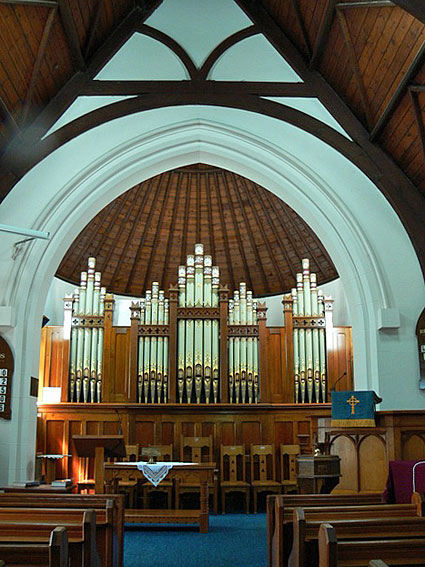



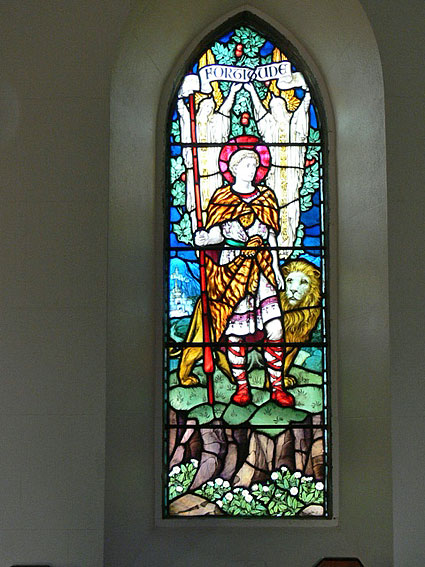


(Uniting Church Archives)
Photos: JRM (Oct. 2008)
E.N. Matthews, Colonial Organs and Organbuilders. Carlton: Melbourne University Press, 1969, pp. 175, 182
Victorian Churches, edited by Miles Lewis. East Melbourne: National Trust of Australia (Victoria), 1991, p.126
1902 specification noted by Bill Glasson
1966 specification noted by John Maidment